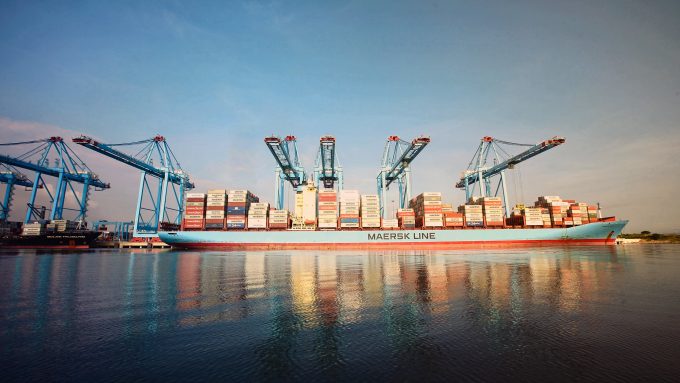DP World plays politics but has bigger fish to fry
UK investment never in doubt
GM: RAISING THE ROOF GGM: IN FULL THROTTLE GZIM: MAERSK BOOST KNIN: READ-ACROSSMAERSK: NOT ENOUGHMAERSK: GUIDANCE UPGRADEZIM: ROLLERCOASTERCAT: HEAVY DUTYMAERSK: CATCHING UP PG: DESTOCKING PATTERNSPG: HEALTH CHECKWTC: THE FALLGXO: DEFENSIVE FWRD: RALLYING ON TAKEOVER TALKODFL: STEADY YIELDVW: NEW MODEL NEEDEDWTC: TAKING PROFIT
GM: RAISING THE ROOF GGM: IN FULL THROTTLE GZIM: MAERSK BOOST KNIN: READ-ACROSSMAERSK: NOT ENOUGHMAERSK: GUIDANCE UPGRADEZIM: ROLLERCOASTERCAT: HEAVY DUTYMAERSK: CATCHING UP PG: DESTOCKING PATTERNSPG: HEALTH CHECKWTC: THE FALLGXO: DEFENSIVE FWRD: RALLYING ON TAKEOVER TALKODFL: STEADY YIELDVW: NEW MODEL NEEDEDWTC: TAKING PROFIT

Toyota is looking at alternative gateways for its new Prius model as the port of Lázaro Cárdenas is inundated with auto imports. It is an ominous sign for movement of auto parts, as the Mexican auto industry is going through the roof and demand for vehicles is strong both in Mexico and the US.
Toyota is planning to get some 3,500 units of its new Prius model into Mexico before the end of the year and has aimed to ship about 500 a month. Lázaro Cárdenas, however, is inundated with auto imports from other Asian countries to the point of saturation, the car maker’s local logistics experts found.
The Association of Mexican Automotive Distributors (AMDA) has warned that the nation’s ports are saturated with car imports, especially the Pacific gateways.
Lázaro Cárdenas has been the most affected Pacific port. According to GoComet, traffic is facing delays of two days at the port. AMDA has signalled that the problems cannot be resolved immediately, so operational measures have been implemented to mitigate the impact.
Last year, the port’s vehicle traffic surged 33.8%. Out of the 280,314 cars imported via ocean into Mexico in the first four months of this year, 169,953 entered the country through Pacific gateways, with 142,203 coming through Lázaro Cárdenas.
Until about five years ago the majority of vehicle imports entered Mexico across the land border with the US or through the Gulf of Mexico, but this has shifted to the Pacific coast. Last year about 70% of imported vehicles came from Asia, with 18.8% out of China.
To avoid congestion at Lázaro Cárdenas, Toyota looked at Acapulco and Mazatlán for alternative routings, but the outlook is not promising. Both ports require investment in infrastructure to handle rising traffic, its logistics managers concluded.
Mazatlán’s vehicle throughput rose from 2,384 cars in 2021 to 27,181 last year.
The port congestion raises concerns over Mexico’s capacity to handle soaring flows of auto parts and other traffic as companies regard it as a prime candidate for nearshoring. Auto parts production in the country has climbed to record levels, well above pre-pandemic volumes. It broke through the $10 billion-a-month barrier in March and the National Auto Parts Industry (INA) expects output to reach $112.7 billion this year.
More is to come. According to INA director-general Alberto Bustamante, investment in the auto parts industry in Mexico in the first quarter reached $398 million. Two thirds of this money came from the US, followed by Germany at 27.2%
The lion’s share of parts flows moves across the US border. The US accounts for 88% of exports, followed by Canada with 3.7%. On the import side, the US leads with 54.6%, followed by China (13.6%), Japan (6.4%), Germany (5.8%) and South Korea (5.4%).
Demand for new vehicles is going strong. Auto sales in Mexico rose 21.37% in the first five months of this year. North of the border General Motors and Ford recently signalled stronger than anticipated demand in their home market, and US vehicle production has climbed back close to pre-pandemic levels.
BNSF is sensing a promising opportunity. The Class I rail carrier recently set up a dedicated operational design team that is focused solely on improving “automotive velocity and customer experience”. The company claims that in the current quarter it managed to boost velocity by 14% while handling record volumes of auto traffic.
The delays at Lázaro Cárdenas are a headache for shippers of other commodities too. The newly amalgamated Canadian Pacific Kansas City railway has been marketing its network reach to Asian shippers highlighting the Mexican port as a gateway to the USMCA market. Faced with congestion at Lázaro Cárdenas and normal operations the US west coast gateways, those clients may find the new alternative less promising.
Comment on this article